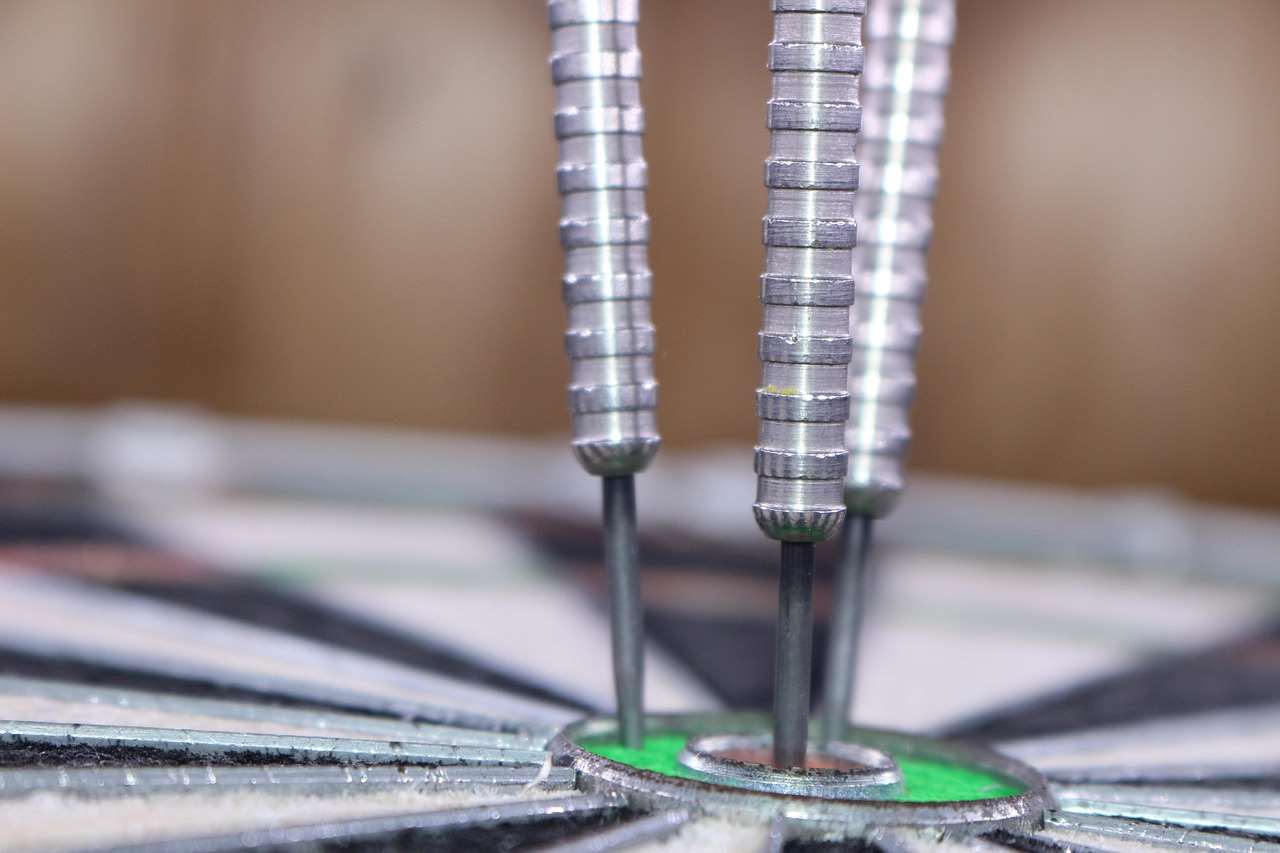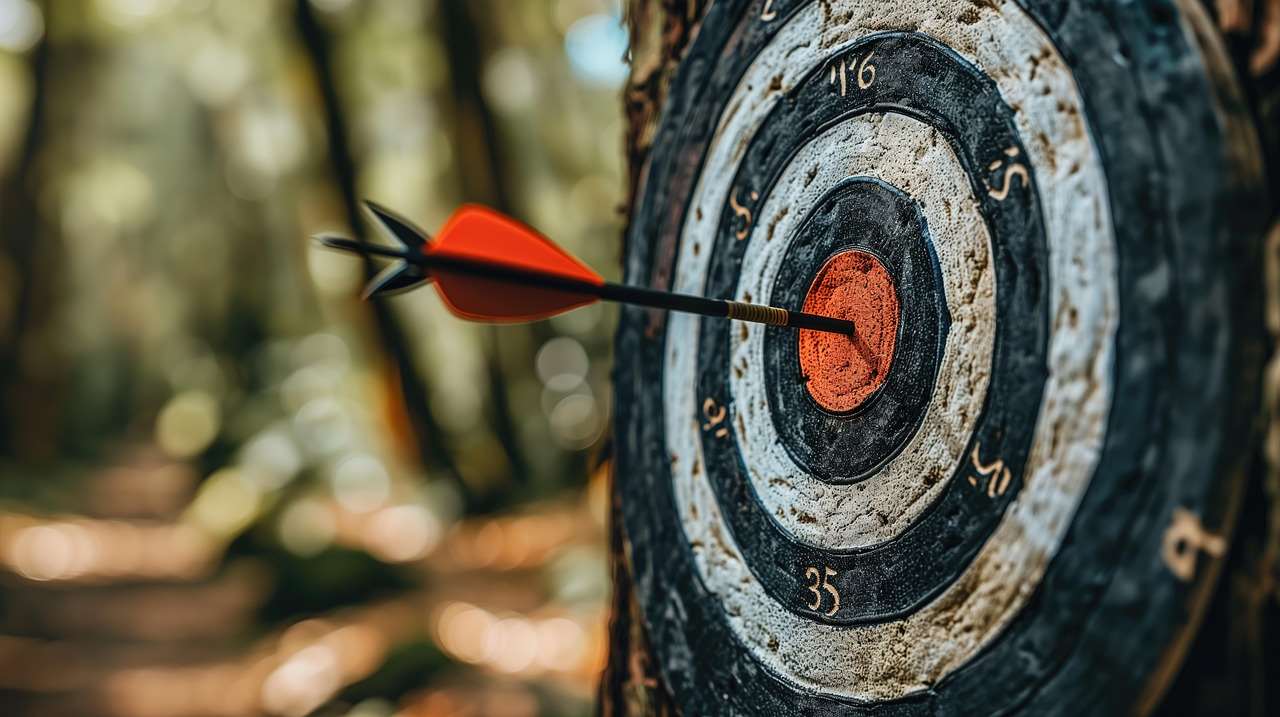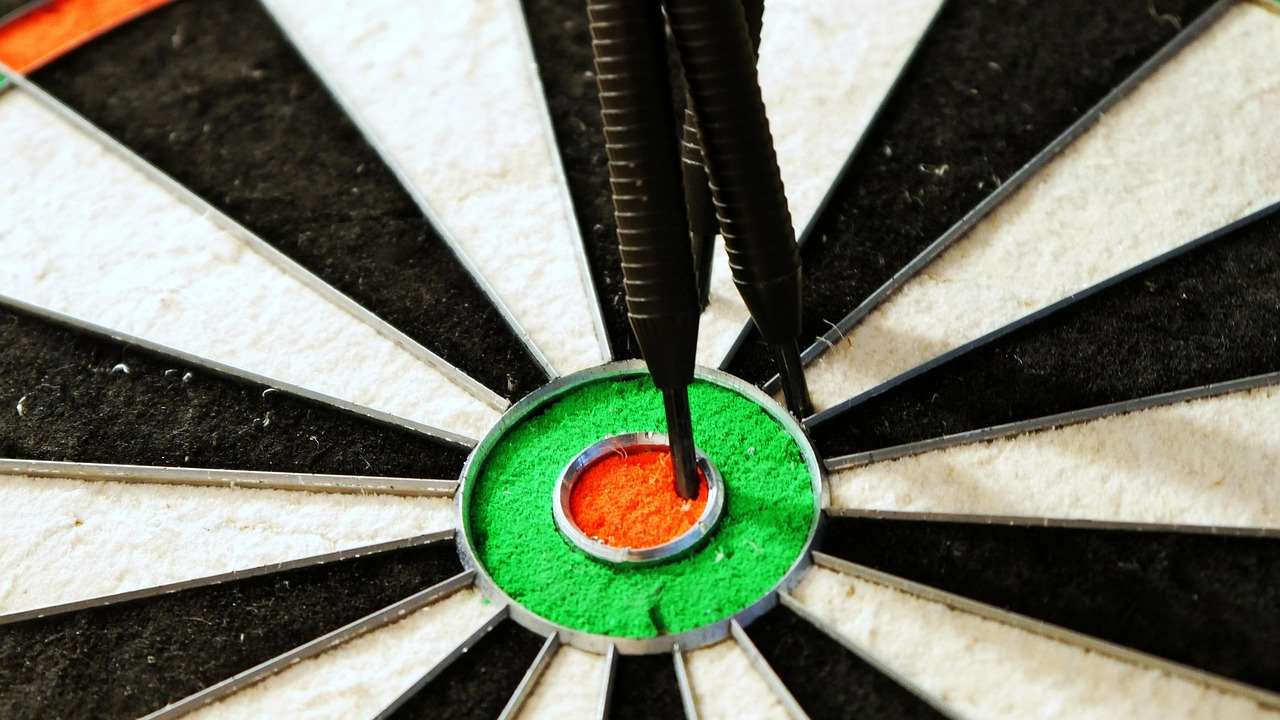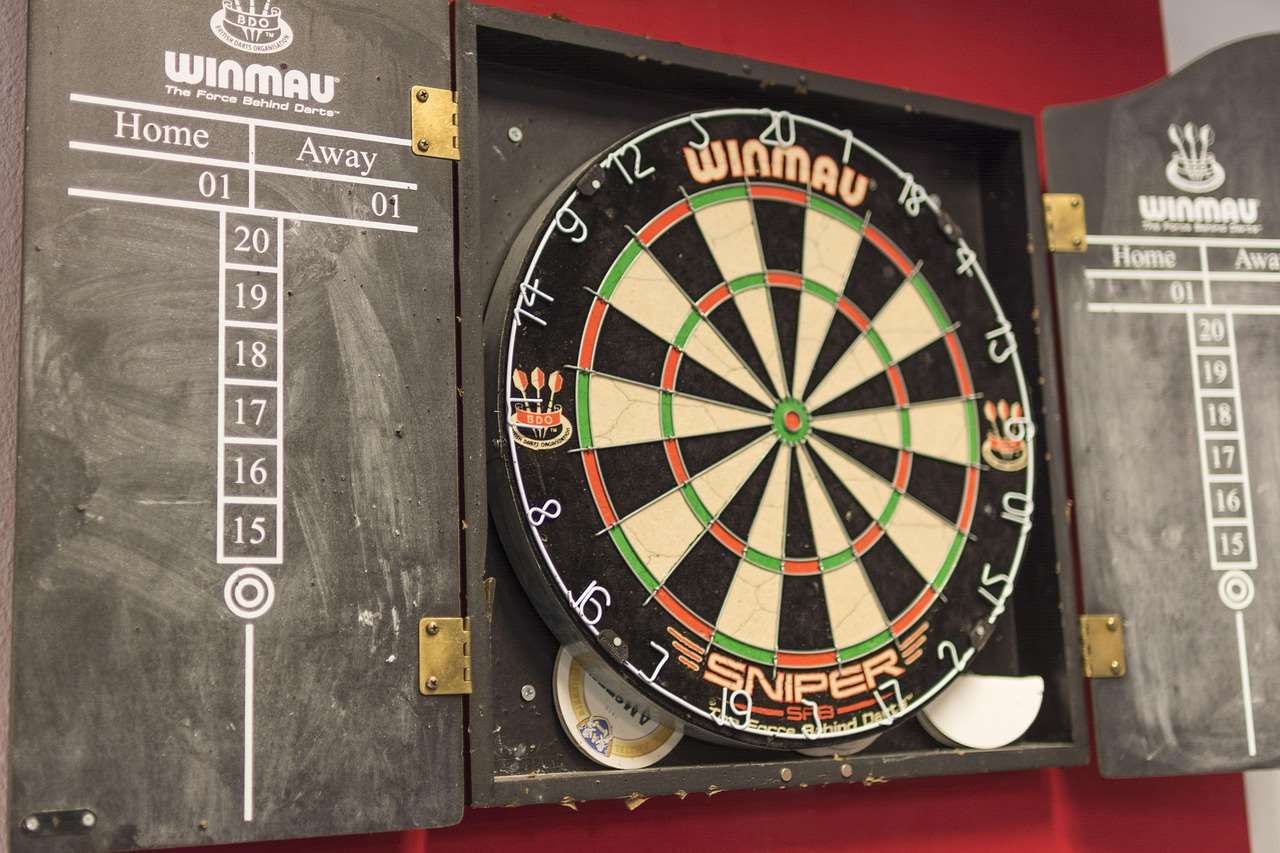Want to skyrocket your dart skills without relying on a partner? The key lies in mastering effective killer darts solo practice drills?. This article will guide you through the most impactful solo drills to improve your accuracy, consistency, and overall game, covering everything from fundamental techniques to advanced strategies that you can practice alone.
⚠️ Still Using Pen & Paper (or a Chalkboard)?! ⚠️
Step into the future! The Dart Counter App handles all the scoring, suggests checkouts, and tracks your stats automatically. It's easier than you think!
Try the Smart Dart Counter App FREE!Ready for an upgrade? Click above!
Unlocking Your Potential: Why Solo Darts Practice Matters
While playing against opponents is crucial for developing game sense and pressure handling, solo darts practice provides a focused environment to hone your individual skills. You can concentrate on specific weaknesses, refine your throwing motion, and build muscle memory without the distractions of competition. It’s like a controlled laboratory where you’re the scientist and your darts are the subjects of experimentation. Think of it as darting meditation – a chance to connect with your throw, your board, and your goals.
The Benefits of Practicing Alone
- Targeted Improvement: Identify your problem areas (e.g., doubles, trebles) and create drills to address them specifically.
- Consistent Repetition: Repeat throws to build muscle memory and groove your technique.
- No Pressure: Practice without the pressure of competition, allowing you to experiment and take risks.
- Convenience: Practice whenever and wherever you have a dartboard.
- Increased Focus: Sharpen your mental focus by concentrating solely on your own performance.

Fundamental Killer Darts Solo Practice Drills? to Master
Before diving into advanced techniques, it’s essential to build a solid foundation with fundamental drills. These exercises will reinforce your basic throwing motion and improve your overall accuracy.
The Round the Board Drill
This classic drill is excellent for improving your accuracy across the entire dartboard. The goal is simple: hit each number (1-20) in order, one dart at a time. You must hit the number before moving on to the next. If you miss, you must keep throwing until you hit it. This drills helps you to spread your accuracy across the whole board and not just focus on 20s and trebles.
The Doubles Practice Drill
Doubles are the bane of many dart players’ existence, but they are essential for finishing games. This drill focuses specifically on improving your doubles accuracy. Choose a double (e.g., Double 20, Double 16) and throw at it until you hit it. Then, move on to another double. This is an essential killer darts solo practice drill?. Mix up the doubles you practice to avoid becoming too reliant on one specific target.
- Beginner Tip: Start with the larger doubles (e.g., Double 1, Double 20) and gradually work your way down to the smaller, more challenging doubles.
- Advanced Tip: Incorporate a “penalty” for misses, such as having to hit two doubles in a row to progress.
The Trebles 20/19 Drill
The trebles are your high scoring zones, so practice hitting them is crucial. Aim for the treble 20 and the treble 19. If you hit treble 20, you go for treble 19 and vice versa, alternate after each successful shot. This increases the overall consistency of your throw. You can also use this to practice any two adjacent numbers.

Intermediate Killer Darts Solo Practice Drills? for Enhanced Precision
Once you’ve mastered the fundamentals, it’s time to step up your game with these intermediate drills. These exercises will challenge your accuracy, consistency, and mental toughness.
The “Around the Clock” Drill
Similar to the Round the Board drill, but with a twist! Start at 20 and work your way around the board in numerical order, but this time you must hit the single, double, and treble of each number before moving on to the next. This drill will test your precision and control.
The Shanghai Drill
Choose a number (e.g., 15). Throw three darts, aiming for the single, double, and treble of that number, in that order. If you hit all three, you’ve scored a “Shanghai” and earn a point. If you miss any of the targets, you get zero points for that round. Continue for 10 rounds. This drill helps with target switching and accuracy under pressure.
The “Checkout Practice” Drill
Set up various checkout combinations (e.g., 40, 61, 81) and practice finishing them. This is one of the most practical killer darts solo practice drills?, as it directly translates to game situations. Focus on your preferred checkout routes and practice them until they become second nature. For a fun challenge, consider exploring some Darts Variants Fun Games to keep your practice sessions engaging.
Advanced Killer Darts Solo Practice Drills? to Dominate
Ready to push your limits? These advanced drills will test your skill, concentration, and mental fortitude.
The “Killer” Drill (Solo Version)
In the traditional “Killer” game, players try to eliminate each other by hitting their assigned number. In this solo version, assign yourself a number and then set a target score you need to reach by only hitting the assigned number. Once you do, move on to another random number and repeat. You are “killed” if you fail to reach the target after a specific number of darts.
The “170 Checkout” Challenge
The 170 checkout (T20, T20, Bullseye) is the holy grail of darts. Practice this elusive checkout until you can consistently hit it. This drill requires immense precision and control. Don’t be discouraged if you don’t hit it often; the practice itself will improve your overall game.
The “Continuous Round the Board”
Start at 1 and continue around the board, hitting each number in order, without stopping. Keep track of how many darts it takes you to complete a full circuit. Try to beat your personal best each time. This is a great endurance drill that tests your consistency over extended periods.

Mental Game Training for Solo Darts Practice
Physical practice is crucial, but the mental aspect of darts is just as important. Use your solo practice time to develop your mental game:
- Visualization: Before each throw, visualize the dart hitting your target.
- Positive Self-Talk: Encourage yourself and stay positive, even after missed throws.
- Focus and Concentration: Eliminate distractions and concentrate solely on your target.
- Breathing Techniques: Use deep breathing exercises to calm your nerves and improve focus.
Using a Dart Scoreboard App for Practice
Tracking your progress is a great way to stay motivated and see where you need to improve. Several dart scoreboard apps are available that can help you track your scores, statistics, and practice sessions. These apps can also provide valuable insights into your strengths and weaknesses.

Equipment Considerations for Solo Practice
Having the right equipment can make a big difference in your solo practice. Invest in a high-quality dartboard, a good set of darts, and proper lighting. A well-lit and properly maintained dartboard will make your practice sessions more enjoyable and effective.
Also, remember that consistency is key, so maintaining your equipment is essential. Clean your dart tips regularly, and replace them when they become worn. Rotate your dartboard to ensure even wear and tear.
There are many obscure dartboard games list that you can use for solo practice too.
Conclusion: Elevate Your Game with Dedicated Solo Practice
Mastering killer darts solo practice drills? is an investment in your overall darting ability. By incorporating these drills into your routine, focusing on your technique, and cultivating a strong mental game, you’ll see significant improvements in your accuracy, consistency, and confidence. Remember to start with the fundamentals and gradually progress to more advanced drills as your skills improve. Embrace the challenge of solo practice, and you’ll be well on your way to dominating the dartboard. Now grab your darts, step up to the oche, and start practicing! Consider trying some old dart games rules to add variety and fun into your solo routines.
Hi, I’m Dieter, and I created Dartcounter (Dartcounterapp.com). My motivation wasn’t being a darts expert – quite the opposite! When I first started playing, I loved the game but found keeping accurate scores and tracking stats difficult and distracting.
I figured I couldn’t be the only one struggling with this. So, I decided to build a solution: an easy-to-use application that everyone, no matter their experience level, could use to manage scoring effortlessly.
My goal for Dartcounter was simple: let the app handle the numbers – the scoring, the averages, the stats, even checkout suggestions – so players could focus purely on their throw and enjoying the game. It began as a way to solve my own beginner’s problem, and I’m thrilled it has grown into a helpful tool for the wider darts community.